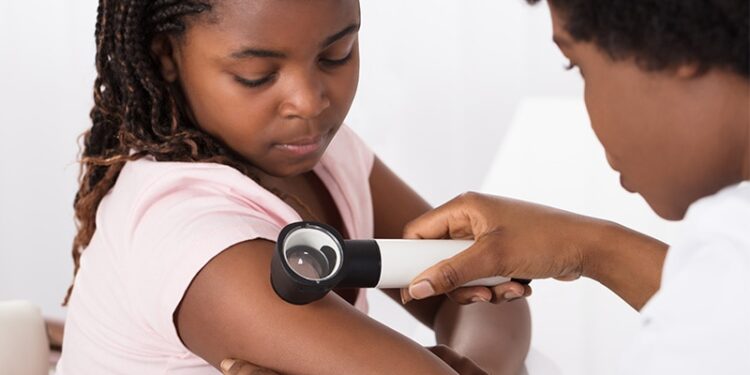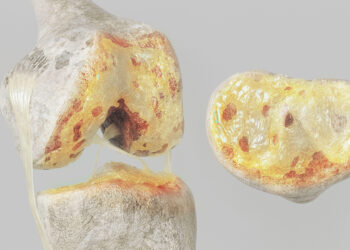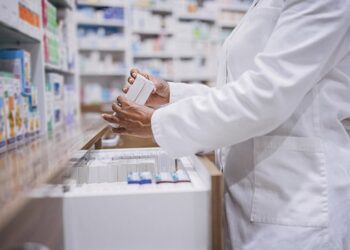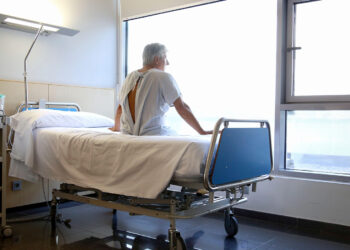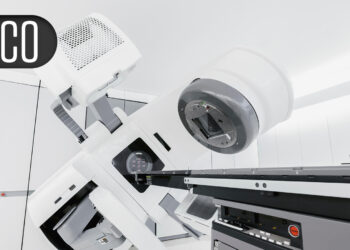ORLANDO, Fla. — A study of automated three-dimensional total-body photography (3D TBP) found that it improved “hit” rates of positive malignant biopsies and reduced unnecessary biopsies of skin lesions but left unanswered questions about the practicality of its widespread use and cost-effectiveness.

“We did observe improved biopsy practices and outcomes,” said Jordan Phillipps, MD, a dermatology resident at Mayo Clinic in Jacksonville, Florida, who reported the results of the study during a late-breaker session at the American Academy of Dermatology (AAD) 2025 Annual Meeting.
“We observed reduced unnecessary biopsies, which was driven by benign and premalignant, particularly actinic keratosis, lesions,” Phillipps said. “We observed improved malignancy detection, which was profoundly driven by nonmelanoma skin cancers.”
Study Design and Results
The retrospective study included 410 adult patients who had at least two sessions with the Vectra WB360 3D TBP imaging system at a dedicated 3D imaging clinic at Mayo Clinic in Rochester, Minnesota Patient eligibility for the 3D clinic requires a previous melanoma diagnosis. All study participants also underwent dermoscopy, Phillipps said. Their average age was 51.6 years, and 53% were women.
The study accounted for 5981 total patient encounters, including 1150 dedicated Vectra imaging sessions, Phillipps said. In this group, 3006 biopsies were performed, of which 56% were benign, 32% were malignant, and 12% were premalignant. The study also separately evaluated lesion type, focusing on keratinocytic and pigmented lesions.
Most of the keratinocytic lesions were nonmelanoma skin cancers, he said, whereas the pigmented lesions were mostly benign.
“The intervention did significantly reduce biopsies per encounter by 35%, and this was driven by benign lesions and premalignant lesions, particularly actinic keratosis lesions,” Phillipps said.
Previous studies of automated TBP have been hampered by small study populations, he said, and this is one of the largest studies of the Vectra WB360 device. “Nonmelanoma skin cancers are underreported,” Phillipps said, noting that most studies focus on melanoma and pigmented lesions. “Our aim was to assess the effect of Vectra implementation on biopsy practice and outcomes,” he explained.
For malignant lesions, the investigators observed an improvement in malignancy detection, a modest 1.6% increase in hit rates of positive malignant biopsies, and a modest 1.3% decrease in the number needed to biopsy, he said.
A subgroup analysis of pigmented and keratinocytic lesions demonstrated that improved malignancy detection is “profoundly driven by nonmelanoma skin cancers” of 71% per biopsy, Phillipps said, along with “sizable” increases in the hit rate (+17%) and a reduction in the number of biopsies (–14%).
Melanoma detection decreased by 62% per biopsy. Phillipps said the reduction was probably because of the study methodology, specifically the eligibility requirement of having had a previous melanoma diagnosis. “These patients typically develop only one primary melanoma,” Phillipps said. To test this, the investigators compared melanoma hit rates with a matched, unexposed cohort that did not have Vectra imaging. They found that the hit rates were similar. “So this was reassuring that we weren’t missing any melanomas,” Phillipps said.
The results also showed improved efficacy for detecting severely dysplastic nevi, for which the hit rate increased by 16% and the number needed to biopsy decreased by 13%. “Actinic keratoses lesions were biopsied less,” he said, noting a 50% decrease. Both benign keratinocytic lesions, predominantly seborrheic keratosis and benign lichenoid keratosis, and benign pigmented (benign nevi) lesions were biopsied less.
Limitations and Questions
The highly selective nature of the patient population was a limitation of the study, Phillipps noted, along with financial and logistical challenges that impede the generalizability of the findings. Overall, he said, the study emphasized that 3D TBP is effective in skin cancer screening and diagnosis, notably beyond pigmented lesions.
Kristina Callis Duffin, MD, MS, chair of dermatology at The University of Utah, Salt Lake City, Utah, called the findings “exciting” but noted that the study did not compare results to the gold standard of clinician-performed skin screenings. “That absolutely would be the important way to do it, through a randomized trial,” she said, “but that’s a hard study to do.”
The cost-effectiveness of total-body imaging also needs to be evaluated, Duffin said. “You really have to look at a number of factors in terms of protection compared to a human gold standard, the rates of biopsies,” she said. “There are a lot of things to unpack; that cost-effectiveness has to be balanced with a more accurate diagnosis and reduction of morbidity with multiple biopsies.”
Phillipps reported no relevant financial relationships. Duffin disclosed financial relationships with AbbVie, Alumis, Amgen, Boehringer Ingelheim, Bristol-Myers Squibb, Celgene, Eli Lilly, FIDE, Janssen Pharmaceuticals, Novartis, and Pfizer.
Richard Mark Kirkner is a medical journalist based in Philadelphia.
Source link : https://www.medscape.com/viewarticle/3d-total-body-photography-shown-decrease-biopsies-improve-dx-2025a10006r7?src=rss
Author :
Publish date : 2025-03-21 06:27:00
Copyright for syndicated content belongs to the linked Source.

